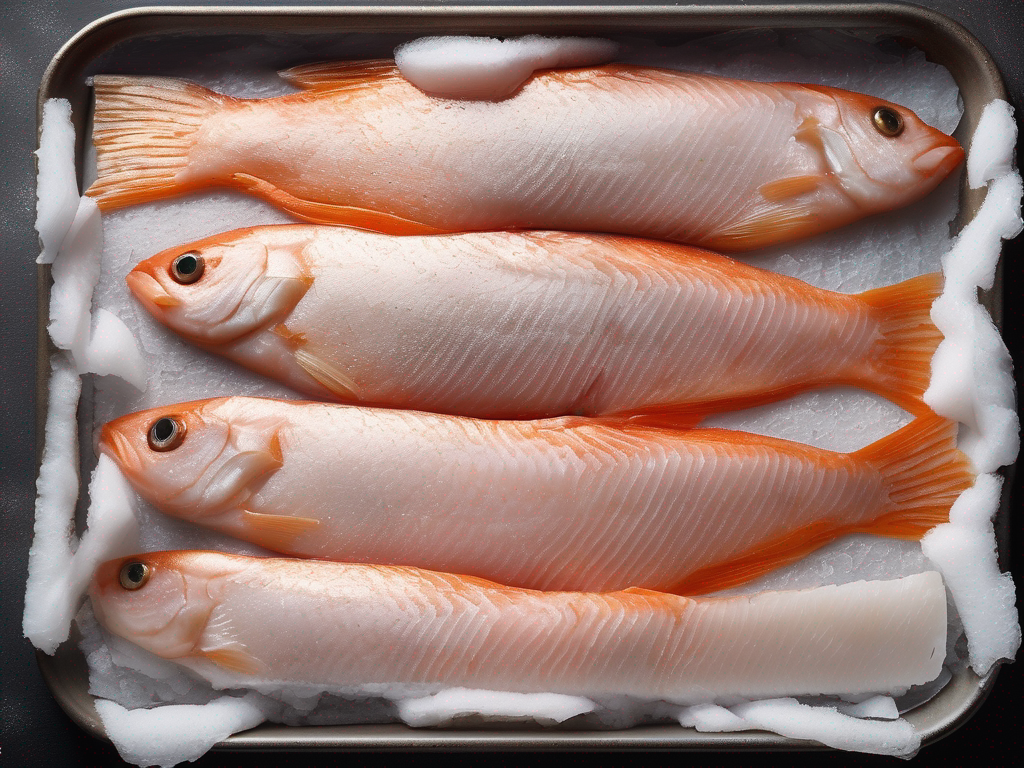
Thawing Frozen Fish Fillet: A Comprehensive Guide
Get Your Free Food Safety Cheat Sheet
30 most common foods with instant answers. Print it and stick it on your fridge—completely free!
Thawing Frozen Fish Fillet: A Comprehensive Guide
Frozen fish fillets are a convenient and versatile option for quick and easy meals. However, to ensure the best quality and safety when cooking with frozen fish, it's crucial to properly thaw them before cooking. In this guide, we'll explore the different methods for thawing frozen fish fillets safely and effectively. (Frozen fish fillet)
Why Proper Thawing is Important
Thawing frozen fish fillets correctly is essential for several reasons:
- Even Cooking: Thawed fish cooks more evenly than fish that is still partially frozen.
- Texture: Properly thawed fish retains its texture and moisture, resulting in a more enjoyable eating experience.
- Food Safety: Thawing fish at the correct temperature reduces the risk of bacterial growth that can lead to foodborne illness.
Methods for Thawing Frozen Fish Fillet
There are three safe methods for thawing frozen fish fillets:
1. Refrigerator Thawing
Thawing frozen fish fillets in the refrigerator is the recommended method for slow, safe thawing. Follow these steps for refrigerator thawing:
- Place the frozen fish fillets in a shallow dish or on a plate to catch any drips.
- Cover the fish with plastic wrap or place it in a sealed container.
- Allow the fish to thaw in the refrigerator for 24 hours or until fully thawed.
2. Cold Water Thawing
If you need to thaw fish more quickly, you can use the cold water thawing method. Here's how to do it:
- Place the frozen fish fillets in a leak-proof plastic bag.
- Submerge the bag in a bowl of cold water.
- Change the water every 30 minutes to ensure it stays cold.
- Thaw the fish for 1-2 hours or until fully thawed.
3. Microwave Thawing
Microwave thawing is the fastest method but requires careful monitoring to prevent partially cooking the fish. Follow these steps for microwave thawing:
- Place the frozen fish fillets on a microwave-safe plate.
- Use the defrost setting on your microwave or set it to 50% power.
- Check the fish every few minutes and rotate or rearrange as needed to ensure even thawing.
Tips for Thawing Frozen Fish Fillet
- Always thaw fish in the refrigerator if you have the time to ensure the best quality.
- Never thaw fish at room temperature, as this can promote bacterial growth.
- Use cold water thawing for quicker thawing but monitor the process closely.
- Avoid using hot water or the microwave for thawing fish unless necessary and use caution to prevent cooking the fish.
Safety Precautions When Thawing Fish
- Wash hands thoroughly before and after handling frozen fish fillets.
- Keep raw fish separate from other foods to prevent cross-contamination.
- Clean and sanitize any surfaces or utensils that come into contact with the fish.
- Cook thawed fish fillets immediately after thawing to ensure food safety.
Conclusion
Properly thawing frozen fish fillets is essential for ensuring food safety and quality when cooking with seafood. By following the recommended thawing methods and safety precautions outlined in this guide, you can enjoy delicious and safe meals using frozen fish fillets. Whether you choose refrigerator thawing for slow and steady thawing or cold water thawing for a quicker option, always prioritize safe food handling practices to enjoy your fish fillets to the fullest. [Frozen fish fillet](/food/frozen fish fillet) (Frozen fish fillet)
Authoritative Food Safety References
These agencies and university labs inform every tip and health precaution we publish.
USDA FoodKeeper – Cold Storage Guidelines
Official refrigerator, freezer, and pantry timelines maintained by the U.S. Department of Agriculture.
Visit USDA FoodKeeperFDA Produce Safety Rule & Grower Guidance
Field-to-fridge handling practices that prevent contamination of fruits, vegetables, and leafy greens.
Visit FDA Produce SafetyCDC Foodborne Illness Prevention Hub
Surveillance-backed guidance on pathogens, symptoms, and steps to reduce foodborne illness risk.
Visit CDC Food SafetyUC Davis Postharvest Technology Center
University research detailing optimal storage atmospheres for produce after harvest.
Visit UC Davis PostharvestPenn State Extension – Home Food Preservation & Safety
Peer-reviewed extension bulletins on safe canning, chilling, and reheating practices.
Visit Penn State ExtensionGet Your Free Food Safety Cheat Sheet
30 most common foods with instant answers. Print it and stick it on your fridge—completely free! Want more? Upgrade to the complete guide with 70+ foods.
Scan your food directly and get instant safety info using our AI-powered camera feature.